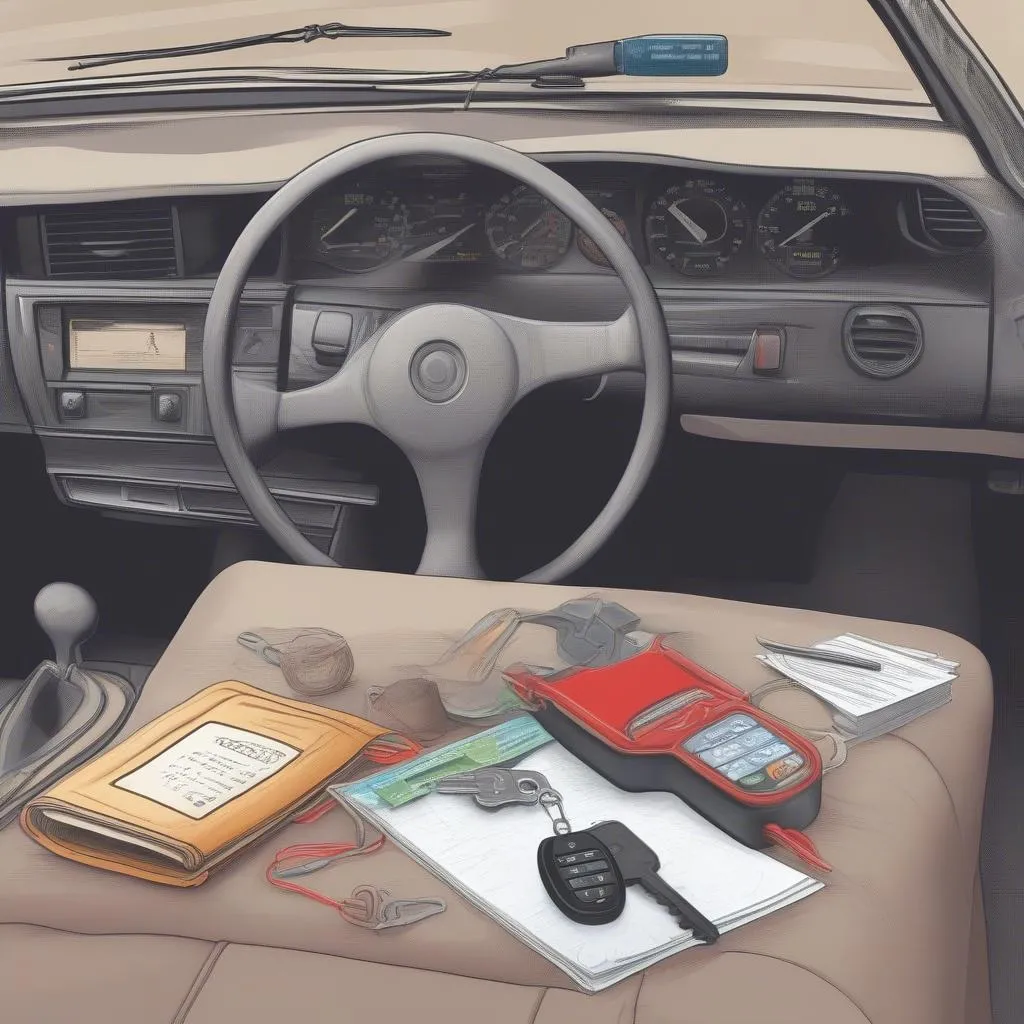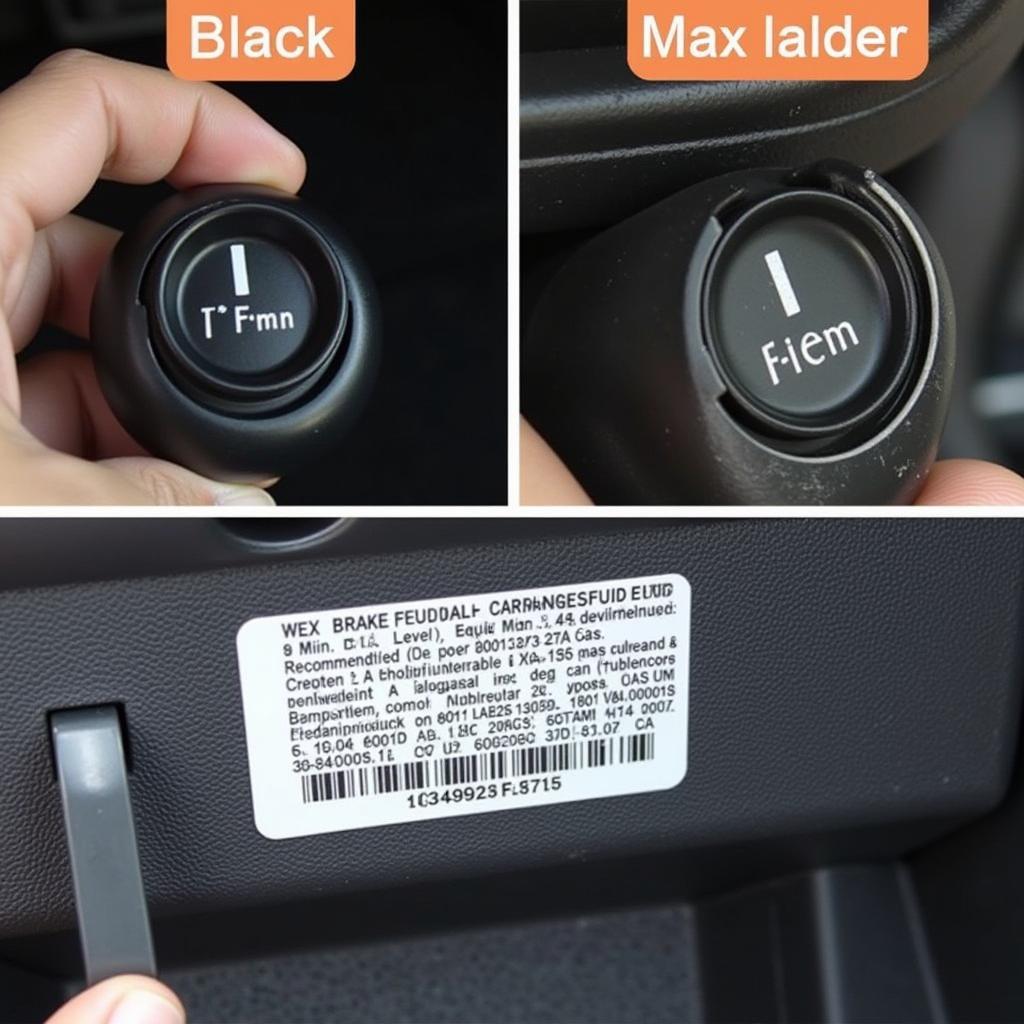AdBlue is a crucial component in modern diesel vehicles like the VW Crafter, helping to reduce harmful emissions. However, sometimes you might encounter an issue with the AdBlue system, prompting you to reset it. This guide will walk you through the process of resetting AdBlue on your VW Crafter, ensuring you understand the steps involved and why they are essential.
Understanding AdBlue and the Reset Process
AdBlue is a urea-based fluid that is injected into the exhaust system of diesel vehicles. It chemically breaks down harmful nitrogen oxides (NOx) into harmless nitrogen and water vapor, meeting stringent emission standards. When the AdBlue system encounters a fault, it can trigger warning lights and limit vehicle performance.
The AdBlue reset process primarily involves clearing error codes related to the AdBlue system. This involves using a diagnostic tool, such as a dedicated OBD2 scanner, to access the vehicle’s computer system. The reset process can vary depending on the specific model year of your VW Crafter, so it is always essential to consult your owner’s manual or seek professional assistance.
Common Reasons for AdBlue Reset
Several factors can lead to the need for an AdBlue reset:
- Low AdBlue Level: When the AdBlue level falls below a critical threshold, the system will trigger a warning.
- AdBlue Quality Issues: Using contaminated or incompatible AdBlue can lead to sensor errors and system malfunctions.
- Faulty AdBlue Sensors: AdBlue sensors monitor the fluid level and quality. If these sensors fail, it can trigger false warnings or prevent the system from operating correctly.
- AdBlue Injector Problems: The AdBlue injector, responsible for injecting the fluid into the exhaust system, can malfunction, leading to error codes.
- Software Glitches: Occasionally, software bugs can affect the AdBlue system’s performance, requiring a reset.
How to Reset AdBlue on a VW Crafter
Remember: Resetting AdBlue is not a fix for underlying problems. If you are experiencing AdBlue-related issues, it’s best to diagnose the root cause and address it accordingly.
Here is a general guide for resetting AdBlue on a VW Crafter:
- Gather Your Tools: You will need a compatible OBD2 scanner capable of accessing the VW Crafter’s systems.
- Locate the OBD2 Port: The OBD2 port is usually located under the dashboard, often near the steering column.
- Connect the Scanner: Plug the OBD2 scanner into the port and ensure it has power.
- Access the Vehicle’s Computer: Use the scanner to navigate to the vehicle’s computer system.
- Identify AdBlue Error Codes: Look for specific codes related to the AdBlue system.
- Clear Error Codes: Follow the scanner’s instructions to clear the AdBlue error codes.
- Test the System: After clearing the codes, start the engine and monitor the warning lights.
Note: If the error codes reappear, it’s crucial to further diagnose the issue with the AdBlue system to determine the root cause.
Expert Advice from Mark Johnson, Certified Automotive Technician
“Many VW Crafter owners mistakenly believe that simply resetting AdBlue will fix the issue. It’s important to remember that AdBlue is a vital part of the vehicle’s emissions system. If you are experiencing persistent AdBlue problems, it’s best to consult a qualified technician who can diagnose and repair the issue.”
FAQ:
Q: Can I reset AdBlue myself, or should I take it to a mechanic?
A: While resetting AdBlue can often be done independently, it’s crucial to be comfortable with using diagnostic tools and understanding vehicle systems. If you are unsure, seek assistance from a qualified mechanic.
Q: Is there a specific reset procedure for different VW Crafter models?
A: Yes, the specific process might vary slightly depending on the model year and engine configuration. Consult your owner’s manual or a trusted mechanic for accurate instructions.
Q: What happens if I ignore AdBlue warnings?
A: Ignoring AdBlue warnings can lead to engine performance issues, reduced fuel efficiency, and potentially damage to the exhaust system.
Q: How do I ensure I am using the correct AdBlue?
A: Always purchase AdBlue from reputable retailers and ensure it meets the required ISO 22241 standard. Avoid using any substitutes or non-approved fluids.
Q: What are some common signs of AdBlue problems?
A: Common signs include warning lights, reduced engine performance, exhaust system issues, and difficulty starting the vehicle.
Conclusion
Resetting AdBlue on your VW Crafter can be a helpful step in addressing warning lights or temporary malfunctions. However, it’s essential to understand that resetting AdBlue doesn’t fix underlying problems. If you are experiencing AdBlue-related issues, always diagnose the root cause and address it appropriately to ensure your vehicle’s optimal performance and emissions compliance. Remember to consult your owner’s manual or a certified technician for specific model instructions and expert advice.


